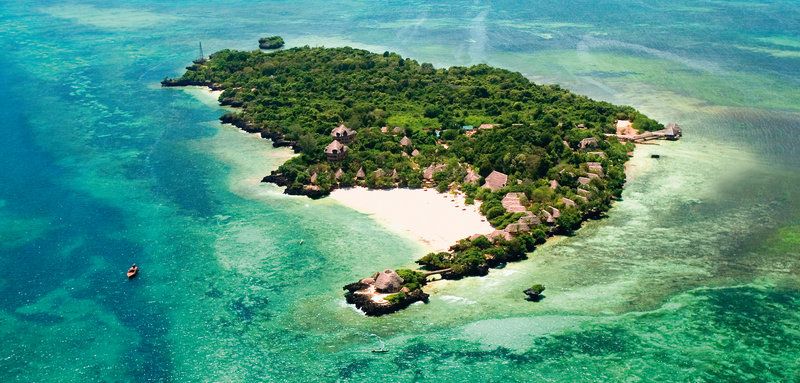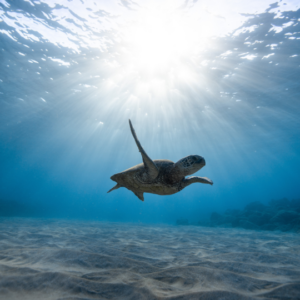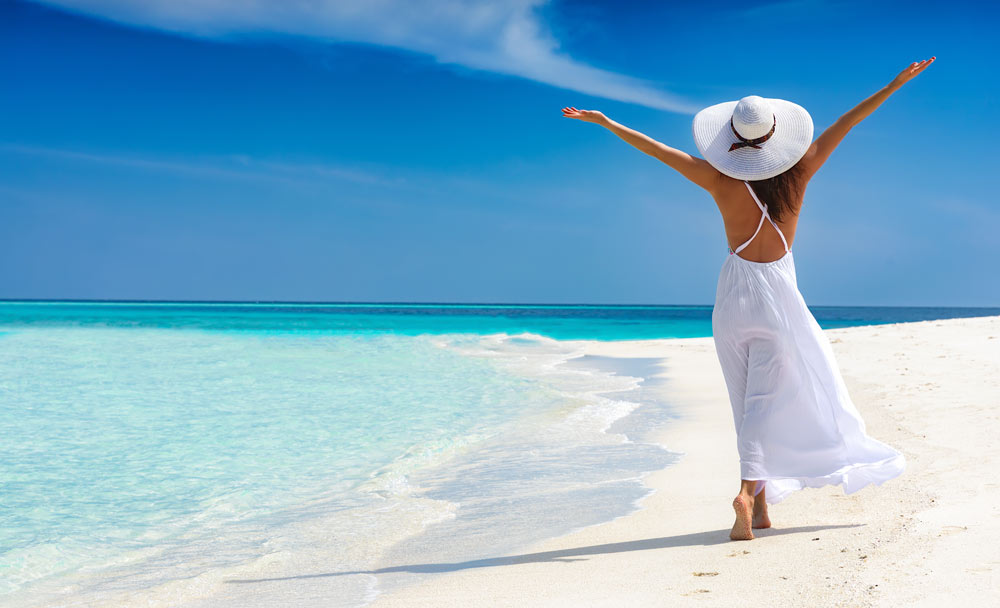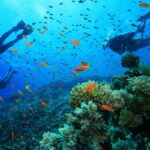The enchanting and beautiful Watamu Marine National Park is one of the jewels in Kenya’s East Coast. This reserve is one of the oldest biosphere reserves of UNESCO, founded in 1968, and provides visitors with an excellent opportunity to explore the marine life along the coast of Kenya.
Below, you will find a detailed guide that will help you to get acquainted with all the necessary information concerning your trip to this beautiful place.
Geographic location of Watamu Marine National Park

Located roughly 120 kilometers north of Mombasa along the North Coast of Kenya, Watamu Marine National Park continues the beautiful coast through Turtle Bay Beach. It spans 7 km from the mouth of Mida Creek in the south up to the scenic cliff that isolates Turtle Bay Beach from Blue Lagoon in the north, with the coral reef acting as the park’s eastern boundary.
How to Get to Watamu Marine National Park

By Air
Three convenient options are available for air travel:
- Take a flight to Moi International Airport located in Mombasa.
- Connect from Nairobi’s Jomo Kenyatta International Airport to Malindi Airport
- Take a flight on a commercial airline from Nairobi and arrive at Diani Airstrip (Ukunda)
Pro Tip: It is advisable to fly to Malindi Airport because it is the nearest to Watamu, thus avoiding the long drive.
By Train
The New Standard Gauge Railway (SGR) provides a beautiful view of Tsavo National Park while on the train, which has become appealing by watching the landscape progress. It is also a remarkable experience as it allows one to view wildlife and some of the scenic features of the Kenyan landscape. Connect from Mombasa via Road.
By Road
To a driver, Watamu is well accessible by road through the A7 highway from Mombasa. The journey usually takes 2-3 hours and affords exciting views of the coast of Kenya. Public transport by bus is also available, with a set time for buses to pass between the major cities and Watamu.
Entry Fees and Seasonal Rates

Low Season (March to June)
- Non-Residents: The fees for foreigners to enter the park is USD 20 for adults and USD 10 for children.
- Rest of Africa: The admission fee is USD 15 for adults while the children pay USD 8.
- East Africa Residents/Citizens: KES 200 (Adults), KES 150 (Children)
High Season (July to March)
- Non-Residents: USD 25 (Adults), USD 10 (Children)
- Rest of Africa: Adults: USD 15 Children: USD 5
- East Africa Residents/Citizens: KES 300 for adults and KES 150 for children.
Important Note: Teenagers aged 5 to 17 are eligible for child rates, while children below five get in for free. Persons up to 23 years of age traveling for educational purposes through accredited institutions pay children’s fare.
Must-See Attractions

-
The Coral Gardens
Stretching 300 meters offshore, the coral gardens showcase:
- It has over 150 species of hard and soft corals.
- Neural corals, sponges, and fan corals
- Over 600 fish species are recorded within its territory.
Specific coral formations to look out for include:
- Colonies of table corals that can extend several meters in width
- Fine finger corals growing in the shallow depths
- Large brain corals that can live for up to 300 years.
- Bright-colored sea fans that move along the water stream
-
The Larder
This unique coral formation in the northern section of the park is famous for:
- This is due to large fish shoals congregating at different areas of the coral heads.
- Waters that are pretty clear and calm are perfect for underwater photographers.
- Mooring areas for the boats that are specially shielded.
- It is perfect for beginners who wish to explore the underwater scenery.
-
Turtle Watch Center
Watamu is renowned for its turtle conservation efforts:
- Safe nesting sites for Green Turtles
- Rehabilitation center for injuries turtles
- Nest monitoring programs
- Increase in the number of Hawksbill and Olive Ridley turtles
-
Mida Creek Mangrove Forest
This globally significant ecosystem features:
- Different mangrove species like Ceriops tagal, Bruguier gymnorrhira
- Fish habitat sites, especially breeding grounds
- It contains over 100 bird species, including resident birds and migrants.
- Crab plovers are birds of global importance due to their concentration in limited areas.
Marine Life Encounters

Fish Species
Watamu’s waters are home to an incredible variety of fish:
- Parrotfish grazing on coral
- Schooling snappers and jacks
- Moray eels reside in rocks and holes that they can effectively camouflage themselves among.
- Colorful fish like the angelfish and butterfly fish.
- Sightings of reef sharks from time to time
Seasonal Visitors
Different seasons bring various marine visitors:
- Whale sharks are found here from November to March.
- Humpback whales (July to September)
- Manta rays (October to April)
- Different types of dolphins are present throughout the year
Activities and Experiences
Water Activities
Snorkeling and Diving
- Over 20 prime dive sites
- Many beaches offer waters with good to perfect snorkeling conditions.
- Professional guides available
- Equipment rental on-site
Glass-Bottom Boat Tours
- Perfect for non-swimmers
- Guided tours of coral reefs
- It is a way of observing marine life without immersing oneself in the water.
Windsurfing and Kitesurfing
- Ideal climate ranges from June to September
- Equipment rental available
- Lessons for beginners
- Protected lagoon areas for practice
Traditional Dhow Excursions
- Sunset cruises
- Bird-watching tours in Mida Creek
- examples of Indigenous fishing activities
- Chances for cultural contact
Wildlife Watching
- Dolphin spotting
- Dive with whale sharks (only available during certain months of the year).
- Bird watching at Mida Creek
- Observe turtle nesting (seasonal)
Essential Items to Pack
Before visiting Watamu Marine National Park, ensure you bring:
- Sun cream (biodegradable and preferably reef-friendly)
- Insect repellent
- Camera
- Hat and sunglasses
- Comfortable water shoes
- Plenty of drinking water
- Light, breathable clothing
Where to Stay
Luxury Options
Hemingway’s Watamu Hotel
- 76 ocean-view rooms
- Perfect for honeymooners
- Full-service amenities
Medina Palms
- Private villas
- Beachfront location
- Spa facilities
Mid-Range Options
Ocean Sports
- 28 rooms and self-catering cottages.
- Family-friendly
- Casual atmosphere
Watamu Tree House
- Unique architectural design
- 360-degree views
- Adventure retreats and yoga that may be offered
Best Photography Spots

Underwater Photography
- The wild landscape of Coral Gardens in the morning light
- Turtle Reef for more marine life snaps.
- The Larder for school fish photography
- Macro opportunities: shallow reefs
Above Water
- Mida Creek boardwalk for bird photography
- Capturing scenic shots during sunsets when in Watamu Beach.
- Aerial views from various viewpoints
- Mangrove forest landscapes
Best Time to Visit

The park experiences two distinct seasons:
- December to May: Warmer waters (up to 30°C)
- June to November: Cooler waters (around 20°C)
Peak Season: July to March offers the best conditions for water activities and wildlife viewing.
Tips for Visitors
- During festive and other busy seasons, such as the end of the year, weekends, and public holidays, one is advised to book their activities as early as possible.
- Buying the KWS tickets before going to the marine park is recommended.
- Do not go near the water and disturb the marine life.
- Ensure that one follows the guide instructions to improve on one’s experience.
- Visiting this sanctuary in the off-season without many tourists is better.
Watamu Marine National Park has breathtaking scenic views with many marine creatures that can be sighted and is relatively effective in its conservation efforts. From aquatic activities such as scuba diving to exploring the diverse wildlife and a serene coastal location, visitors to these World Heritage sites in Kenya shouldn’t be disappointed.





